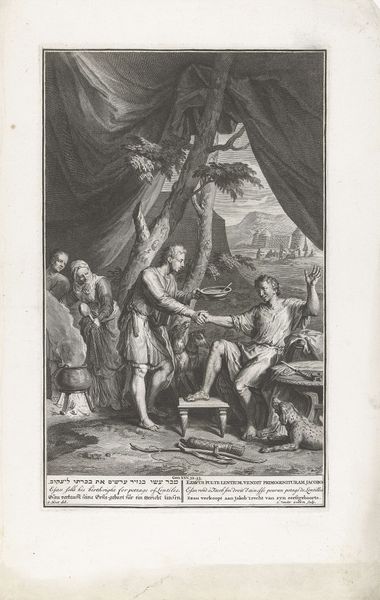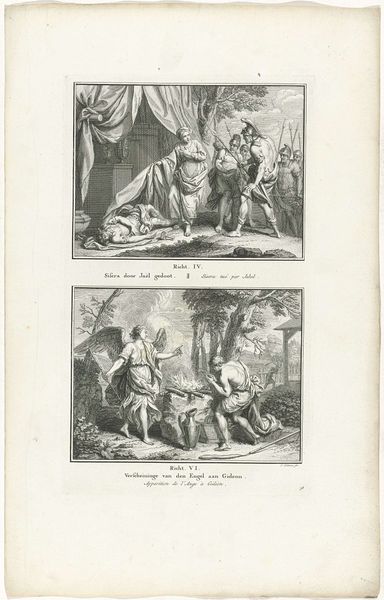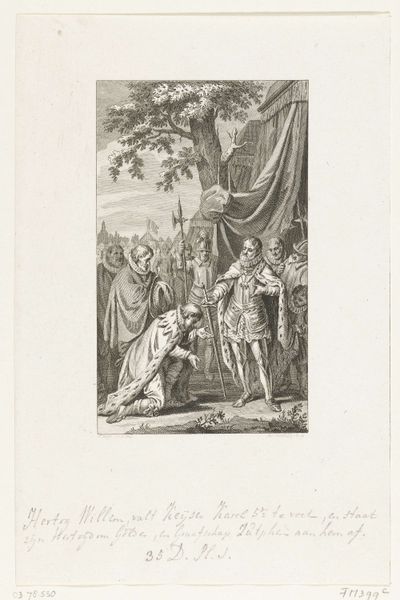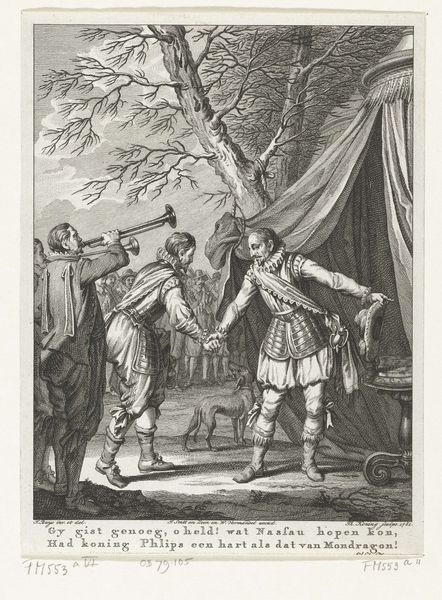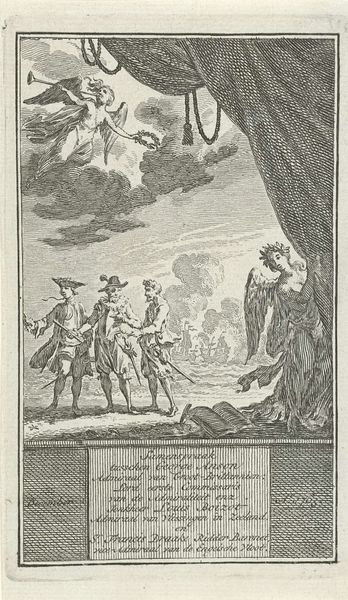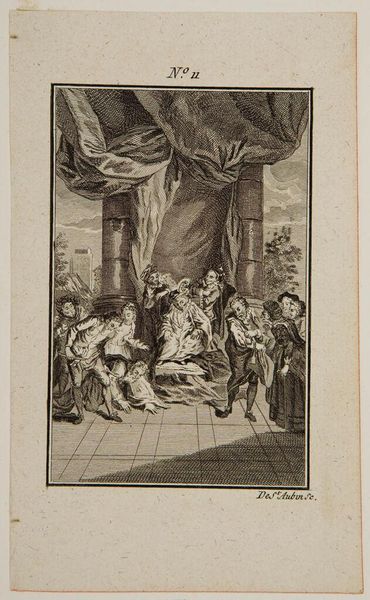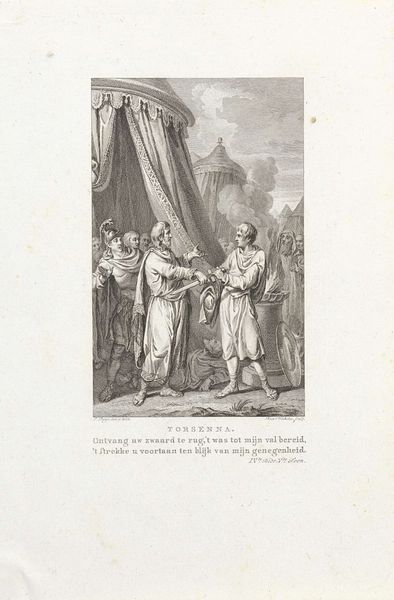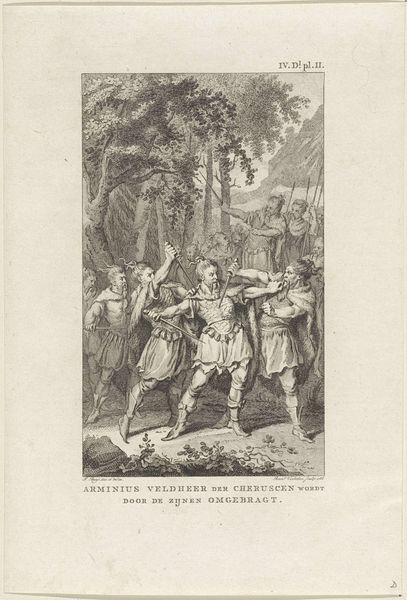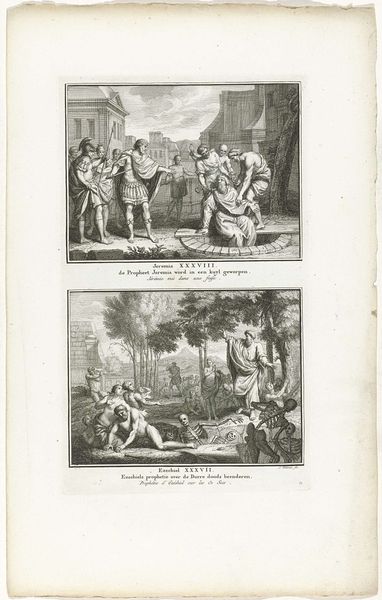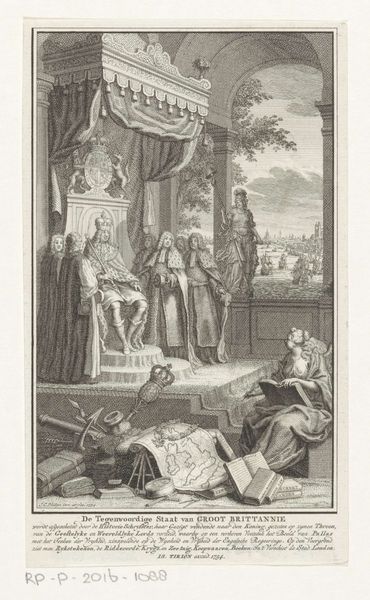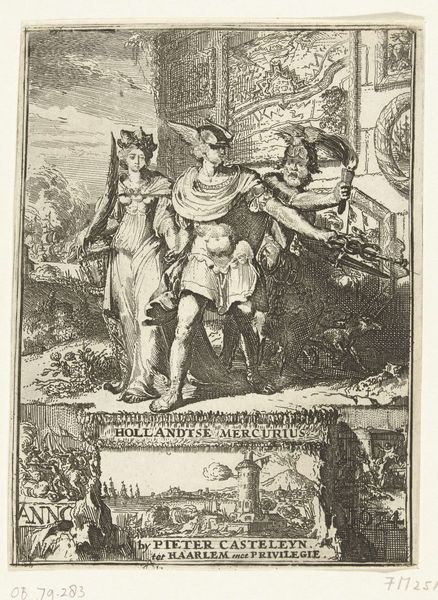
print, engraving
#
narrative-art
#
baroque
# print
#
old engraving style
#
figuration
#
line
#
history-painting
#
engraving
Dimensions: height 188 mm, width 126 mm
Copyright: Rijks Museum: Open Domain
Bernard Picart created this print, Achilles Weigert de Geschenken van Agamemnon, using engraving, a printmaking process with a long and detailed history. The linear quality visible in the image comes from the way the artist carefully used a tool called a burin to carve lines into a metal plate. The depth and precision of the engraving allowed for incredibly fine details, from the folds in the fabric to the expressions on the figures' faces. The process demands tremendous skill, and the image could be reproduced many times over. The technique of engraving itself has a social context. In Picart's time, it was used to circulate images widely, making art and ideas accessible to a broader public. The act of engraving, with its careful labor and capacity for mass production, mirrors the themes of value, exchange, and refusal depicted in the scene. The contrast between the labor-intensive process and the story of rejected gifts invites us to consider the complexities of work, worth, and social relations. By understanding the material and processes used to make this print, we can appreciate how the artwork’s meaning is deeply intertwined with the social and economic context of its creation.
Comments
No comments
Be the first to comment and join the conversation on the ultimate creative platform.
